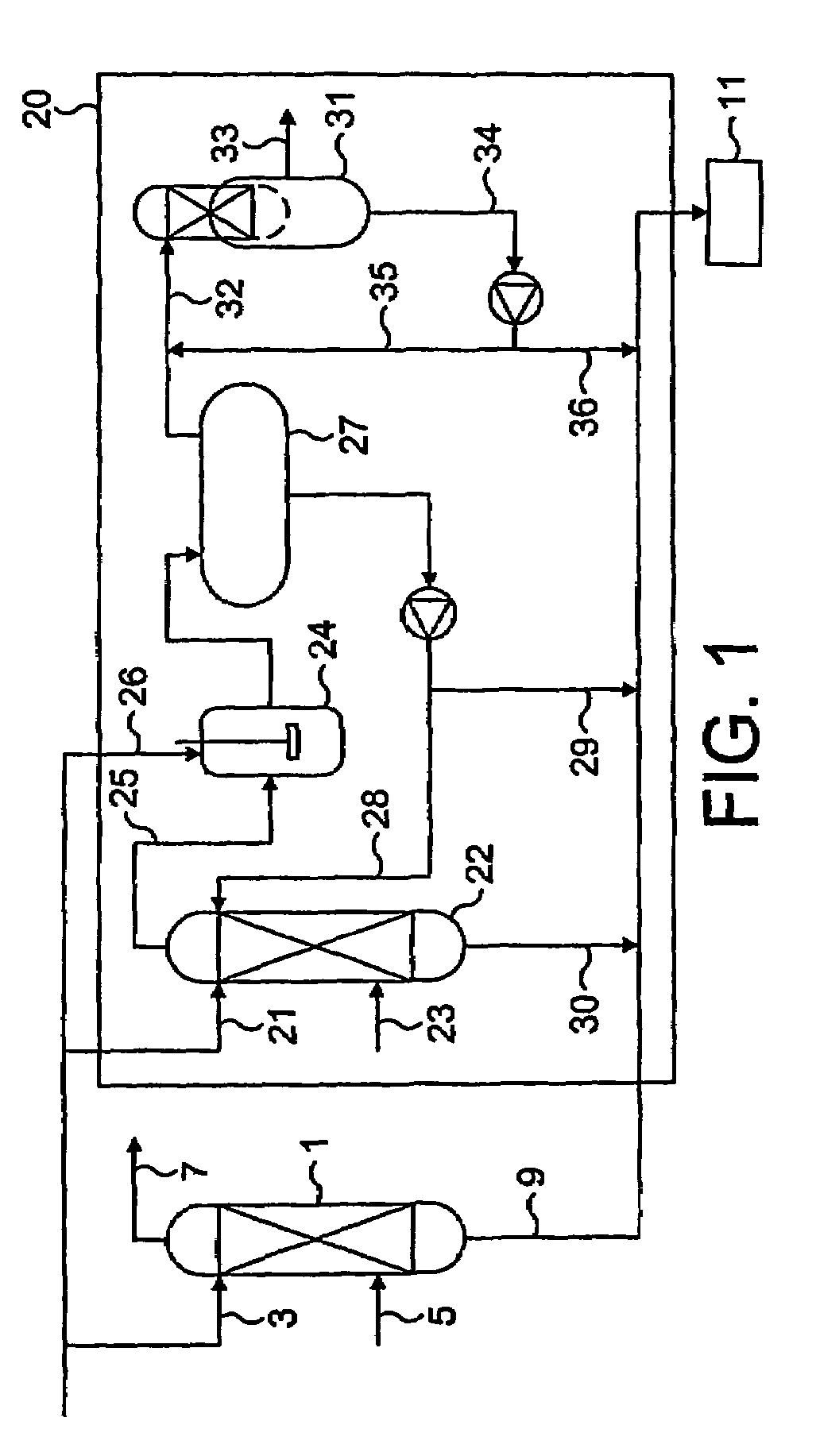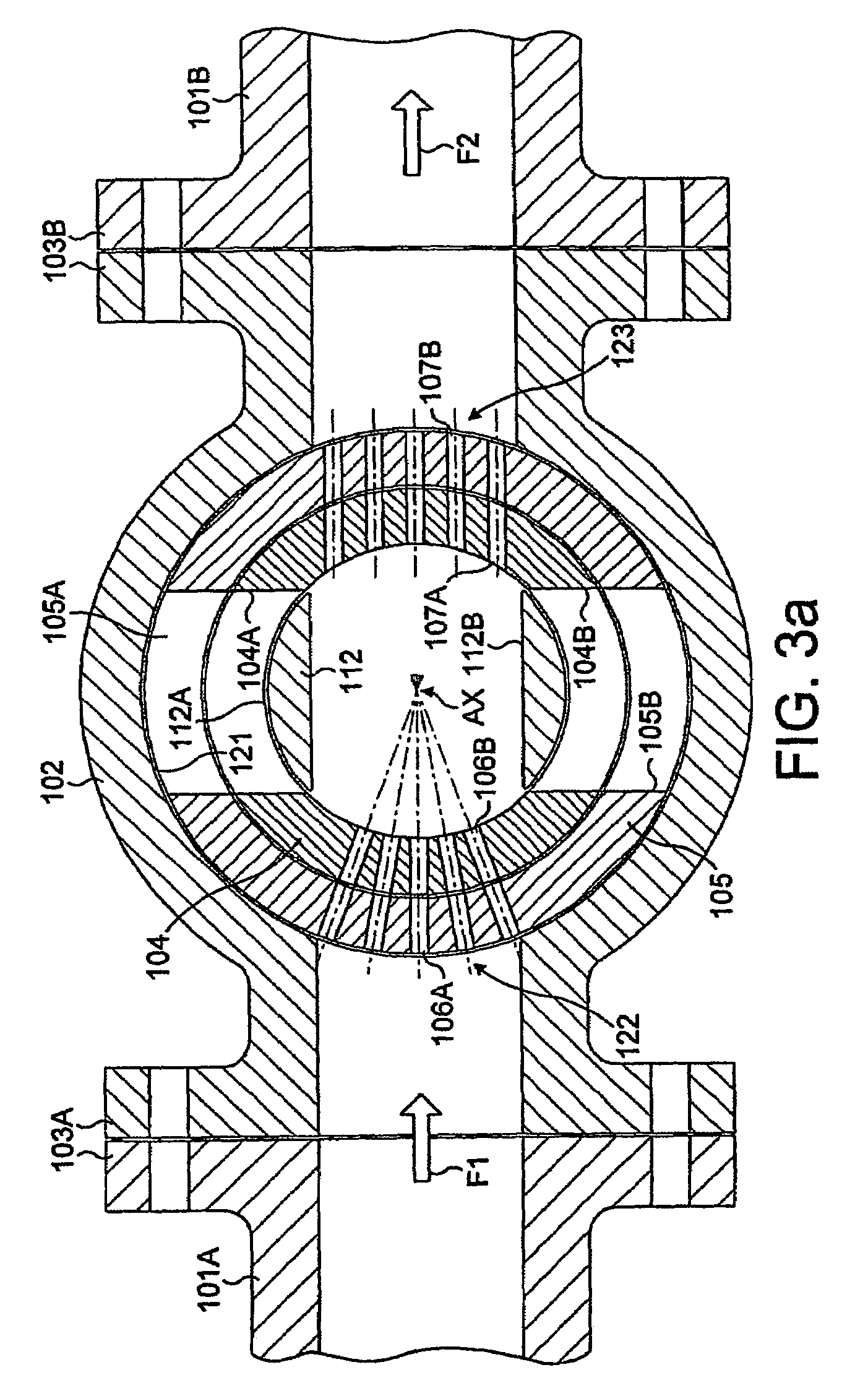Acid gas removal
a technology of acid gas removal and absorption capacity, applied in the direction of vortex flow apparatus, hydrogen sulfide, single-direction vortex, etc., can solve the problems of insufficient acid gas absorption capacity of existing plants, and inability to effectively remove the acid gas. , to achieve the effect of reducing or eliminating the co-absorption of carbon dioxide and/or the entrainment of hydrocarbons, increasing the acid gas absorption capacity of existing
- Summary
- Abstract
- Description
- Claims
- Application Information
AI Technical Summary
Benefits of technology
Problems solved by technology
Method used
Image
Examples
first embodiment
[0053]FIG. 4a shows a contactor which may be the first of the series mixers in contactor unit 50. The contactor 201 comprises a gas stream inlet 202, a liquid stream inlet 203 and an outlet 204. The gas stream is supplied to the gas stream inlet which leads to a converging pipe section 205. The converging pipe section 205 accelerates the gas stream as it passes the liquid stream inlet 203 to the end of the pipe section 205 where there is a sharp edge 206. Downstream of this sharp edge 206 there is a reaction zone 207 where the gas and liquid are preferably formed into a homogeneous mixture.
[0054]The liquid is supplied to the liquid stream inlet 203 from where it is fed in a controlled manner to the inside of the converging pipe section 205. The liquid is presented to the pipe in the form of an annulus around the inner surface of the pipe. The initial phase velocity of the liquid exposed to the gas stream is governed by the liquid flowrate, the gap distance 208 and the annulus distan...
second embodiment
[0057]FIG. 4c shows a contactor suitable for use in the method of the present invention as the first mixer in contactor unit 50. Contactor 220 comprises a gas stream inlet 222, a liquid stream inlet 223 and an outlet 224. The gas stream is supplied to the gas stream inlet which leads to a converging pipe section 225 for accelerating the gas stream. At the end of the converging pipe section there is a sharp edge 226 downstream of which there is a reaction zone 227 where the gas and liquid are preferably formed into a homogeneous mixture. One difference between the contactor of FIG. 4a and that of FIG. 4c is the relative location of the liquid inlet to the annulus of liquid. In this case, the liquid is supplied to the inlet 223 from where it passes through the passages 223a and 223b to a reservoir 223c which passes round the circumference of the pipe. The liquid then passes out through the channel 223d which again passes round the whole circumference of the pipe (see FIG. 4d) to an an...
PUM
| Property | Measurement | Unit |
|---|---|---|
| diameter | aaaaa | aaaaa |
| diameter | aaaaa | aaaaa |
| diameter | aaaaa | aaaaa |
Abstract
Description
Claims
Application Information
 Login to View More
Login to View More - R&D
- Intellectual Property
- Life Sciences
- Materials
- Tech Scout
- Unparalleled Data Quality
- Higher Quality Content
- 60% Fewer Hallucinations
Browse by: Latest US Patents, China's latest patents, Technical Efficacy Thesaurus, Application Domain, Technology Topic, Popular Technical Reports.
© 2025 PatSnap. All rights reserved.Legal|Privacy policy|Modern Slavery Act Transparency Statement|Sitemap|About US| Contact US: help@patsnap.com



